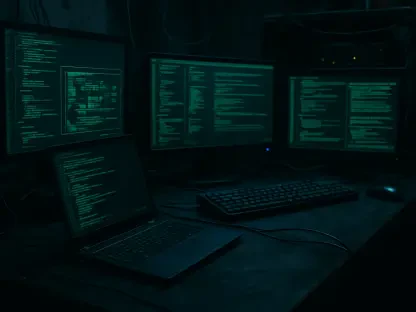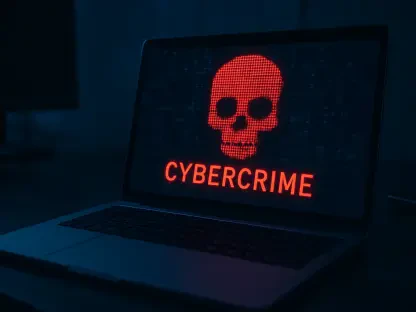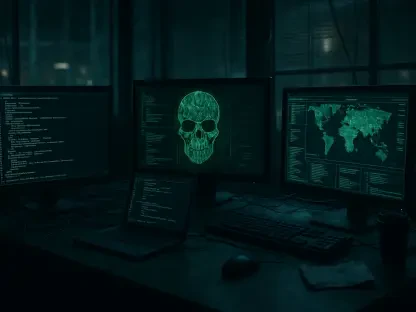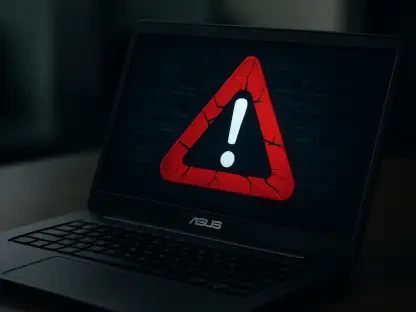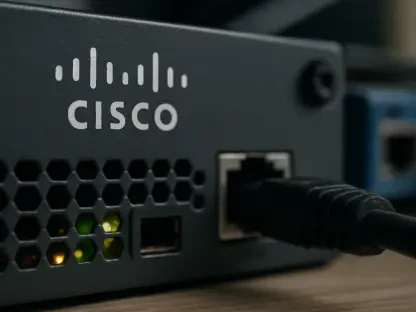In today’s rapidly evolving digital landscape, cyber threats are a constant concern for organizations worldwide. The importance of Cyber Threat Intelligence (CTI) in identifying and mitigating these threats cannot be overstated. However, while there is an abundance of CTI available from various sources, effectively utilizing this intelligence remains a significant challenge for many organizations. The struggle lies not in the shortage but in the overwhelming volume and complexity of available data, leading to underutilization and inefficiency in deploying actionable intelligence.
The Critical Role of Threat Intelligence in Cybersecurity
Cyber Threat Intelligence (CTI) plays a pivotal role in safeguarding organizations against various cyber threats. By providing data on potential threats, CTI enables cybersecurity tools and platforms to preemptively address and neutralize risks. Despite the significant supply of CTI from governmental, commercial, and non-governmental organizations, the primary challenge is not in obtaining intelligence but in effectively consuming and deploying it. For many organizations, the sheer volume of available threat intelligence can be overwhelming. Without a strategy for filtering and prioritizing this information, even the most comprehensive CTI can go underutilized. This dilemma underscores the need for sophisticated tools and processes that can automate the integration of CTI into existing cybersecurity frameworks, minimizing manual intervention and enhancing response times.
Effective use of CTI can significantly enhance an organization’s defense mechanism. It plays an instrumental role in predicting potential threats by providing actionable insights into adversaries’ strategies and behaviors. However, the challenge lies in the necessity for automation and advanced tools that can integrate CTI seamlessly. Thereby, reducing the heavy reliance on manpower and enabling real-time threat neutralization. Automation tools not only assist in handling the vast data flow but also help in filtering and prioritizing the most critical threat indicators, ensuring that security teams can act swiftly and decisively.
Evolution of Cyber Threat Intelligence
The journey of Cyber Threat Intelligence has seen significant milestones, especially since the early 2010s. Initially, one of the main issues was the inconsistent format and transmission of CTI data. This problem was addressed by Richard Struse and his work with the Department of Homeland Security’s National Cybersecurity and Communications Integration Center (NCCIC), leading to the creation of international standards such as STIX (Structured Threat Information eXpression) and TAXII (Trusted Automated eXchange of Indicator Information). These standards revolutionized the way CTI was represented and exchanged, allowing for more actionable and interoperable threat intelligence. Over time, there has been a paradigm shift from focusing primarily on Indicators of Compromise (IOCs) to understanding adversary tactics, techniques, and procedures (TTPs). Unlike IOCs, which may have short relevance periods, TTPs provide longer-lasting insights into adversarial behavior and strategies.
Richard Struse’s contributions have significantly advanced the field of CTI, addressing the early challenges related to data transmission and standardization. The establishment of STIX and TAXII has been pivotal, providing a framework that enables different systems and organizations to communicate threat information effectively. This standardization ensures that CTI data is not only easily shared but also actionable, enhancing its value in real-time cybersecurity operations. The shift from IOCs to TTPs marks an important evolution, as understanding adversaries’ methodologies offers a deeper level of insight, allowing for more strategic and robust defense mechanisms. Unlike IOCs, which are often short-lived and specific to individual threats, TTPs encompass broader patterns and behaviors, providing long-term utility in defense planning.
Challenges in Utilizing Threat Intelligence
Despite advancements in the standardization and sharing of CTI, numerous challenges persist in its effective utilization. One significant hurdle is the lack of dedicated CTI personnel and resources within many organizations. Many entities, especially small to medium-sized businesses, struggle to allocate the necessary staffing and expertise required to fully harness the potential of CTI. Automation and advanced analytical tools can play a crucial role in overcoming these resource constraints. By automating the integration and analysis of CTI, organizations can better prioritize threats and streamline their response strategies. However, this requires investment in the right technologies and a commitment to ongoing adaptation and training to ensure these tools are used effectively.
The lack of specialized CTI professionals is a critical bottleneck in the effective utilization of threat intelligence. While large organizations might have the resources to build and maintain dedicated CTI teams, smaller entities often find it challenging due to budget constraints and the scarcity of skilled personnel. Investment in automation tools offers a viable solution, but these tools must be supplemented with continuous learning and adaptation to evolving threats. Without the right training and processes in place, even the most advanced tools can fall short. This highlights the need for ongoing education and skill development in cybersecurity teams, ensuring that they can leverage CTI to its fullest potential.
Value of Current Cyber Threat Intelligence Platforms
The landscape of CTI resources is diverse, encompassing open-source intelligence, Information Sharing and Analysis Centers (ISACs), and commercial services. While these resources are invaluable, the challenge lies in effectively leveraging them to enhance an organization’s cybersecurity posture. Platforms like Tidal Cyber are designed to bridge this gap by helping organizations align their defense mechanisms with relevant CTIs, thereby reducing information overload and unnecessary technological expenses. By mapping CTIs to existing defenses, such platforms provide actionable insights that highlight strengths and vulnerabilities in an organization’s cybersecurity framework. This process not only improves threat detection and response but also informs strategic decision-making for future defense enhancements.
Utilizing various CTI platforms effectively can significantly bolster an organization’s defense capabilities. By integrating intelligence from diverse sources, organizations can develop a more comprehensive understanding of the threat landscape. Platforms like Tidal Cyber facilitate this by offering tools and frameworks that streamline the integration of CTI into existing defenses. This holistic approach not only enhances immediate threat response but also supports long-term strategic planning. By providing a clear view of both existing strengths and potential vulnerabilities, these platforms help organizations prioritize their defense investments and actions, ensuring optimal use of available resources.
Adopting a Threat-Informed Defense Strategy
A key recommendation by experts like Richard Struse is the adoption of a threat-informed defense approach. This strategy dictates that organizations should establish a clear linkage between identified threats and the TTPs associated with them. Such an approach requires systematic and scalable methods, which are often lacking in many entities. Platforms that support threat-informed defense, like Tidal Cyber, are instrumental in this process. They facilitate the mapping of CTI to current defenses, providing a ‘treasure map’ that shows which defenses are effective and which areas need improvement. This data-driven approach allows organizations to make informed decisions on fortifying their cybersecurity measures.
Implementing a threat-informed defense strategy is essential for ensuring robust and adaptive cybersecurity defenses. By focusing on the TTPs of adversaries, organizations can develop a more proactive and resilient defense posture. Platforms that enable this approach are invaluable, as they provide actionable insights that link current defenses to specific threats. This not only improves threat detection and response but also ensures that cybersecurity measures are continuously optimized. A threat-informed defense strategy emphasizes the need for continuous monitoring and adaptation, ensuring that defenses remain effective against the evolving threat landscape.
The Future of Cyber Threat Intelligence
In today’s fast-paced digital world, cyber threats are a major concern for organizations around the globe. The role of Cyber Threat Intelligence (CTI) in detecting and countering these threats is incredibly important. Despite the plethora of CTI available from numerous sources, many organizations struggle to utilize this intelligence effectively. The issue isn’t a lack of information but rather the sheer volume and complexity of the data. This abundance can be overwhelming, leading to inefficiencies and missed opportunities to use actionable intelligence to its full potential. For many organizations, the challenge lies in sifting through vast amounts of data to find relevant insights that can actually make a difference.
It’s essential to have a robust strategy for managing CTI. This involves not just collecting data, but also analyzing it in a way that extracts valuable insights. Automation tools can help manage the workload, but human expertise is crucial for interpreting the data correctly. Training and education are also vital, ensuring that personnel can differentiate between critical intelligence and noise.
Organizations must invest in the right tools and skills to streamline their CTI processes effectively. By doing so, they can not only enhance their security posture but also respond more swiftly to emerging threats, thereby safeguarding their assets and reputations in the ever-evolving digital landscape.


